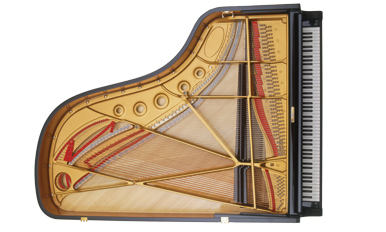
Jazz legend Thelonious Monk, one of the greatest to ever tickle the ivories, once said, "The piano ain't got no wrong notes."
Clearly he never heard us play. The instrument, said to have been invented in the seventeenth century by Italian Bartolomeo Cristofori, is an ingenious concoction of hammers, strings, pedals, and keys on which many of the greatest musicians composed their masterpieces. For the rest of us, it's often our first foray into the world of musicianship.
"The layout is so logical," says Max Mitler, the technician who ensures that the pianos at the Katzen Arts Center sound exquisite. "On another instrument like a clarinet or guitar you have to learn that roadmap of the fingering, whereas on a piano within minutes you could teach somebody the notes and it's just right there in front of you."
A direct descendant of the harpsichord, the piano produces sound when one of 88 keys (52 white and 36 black, made out of plastic these days) is pressed and powers a hammer to strike one of 220 strings. (The number of strings can vary.)
"If you lift the hammer deliberately toward the string, it comes very close to the string, but it doesn't touch it. From that point on, momentum is the only thing carrying the hammer toward the string, so we can choose to play softly or loudly," Mitler says. "This is one thing I find magical about pianos."